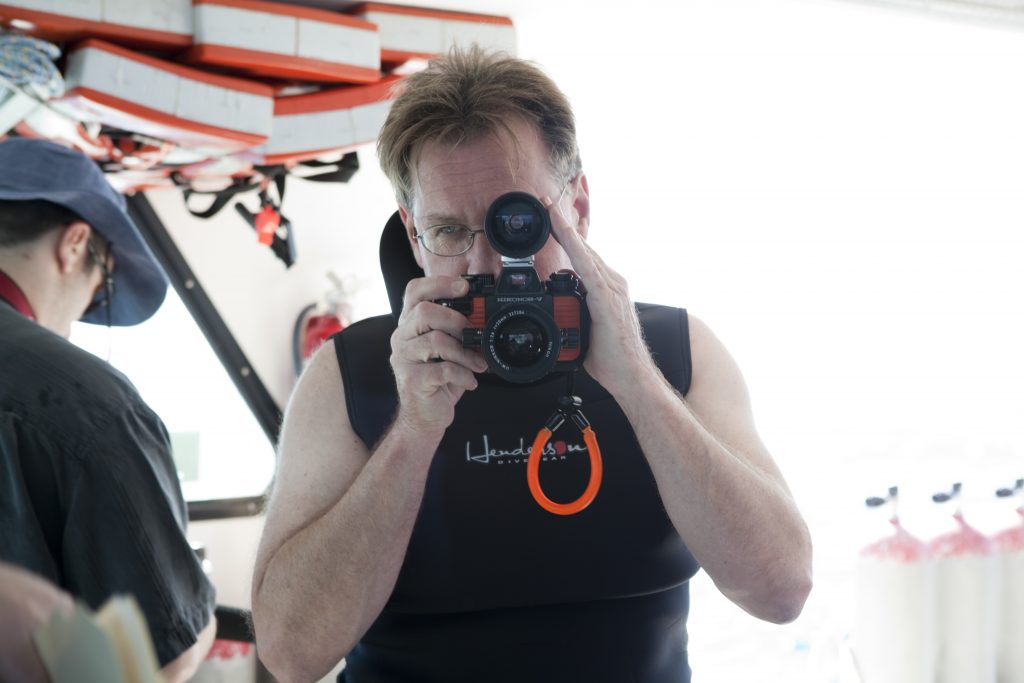This blog post has been written by Bruce Hall, a legally blind photographer and disability advocate. In this post, he explains what kind of equipment he uses to take photos. Check out some of his work in the gallery below, and at his website http://www.brucehallphoto.com.
Thank you Venkat for your work imagining the future of assistive technology. The founder of this important blog has asked me to describe the equipment i use, techniques, and the kinds of things I look for while taking photos.
My name is Bruce Hall and I am a photographer and disability advocate. I was born legally blind with about 5% normal eyesight and severe nystagmus – rapid uncontrolled eye movement, as well as severe myopia and a a few other conditions. So, how does my eyesight affect my day to day life. I do not drive a car…legally. I can’t read street signs unless they are very large, and I’m next to a sign. I won’t know the color of your eyes unless I’m about 3” from your face. And the nystagmus, rapid eye movement, makes focusing a real challenge. Reading even large text is very difficult so I occasionally use a screen reader on my desktop computer. I use VO (voice over, the IOS screen reader) on my iPhone and iPad most of the time. The good news, for me, is that I can see detail at about 3’ from my face. This allows me to study photographs, and look at what I’ve taken or made. I have used photography to see for over 50 years.
I use a variety of equipment depending of the situation, and find that all photographic equipment has pros and cons. For me, fast and accurate focusing is my #1 requirement. I’ve always appreciated gear that is quick and responsive. My Nikon D750 with the 70-200 2.8 VR is a joy to shoot and allows me to accurately capture subjects that are just a blurry impression. Yet, large cameras are often too cumbersome for my needs. I’ve been a fan of the canon G series compact cameras for many years. They’re relatively fast, have manual controls, and they’re rugged. When asked, “what is your favorite camera?” I usually answer, “the one I have with me at the time.” Most of us carry smartphones with decent cameras and I usually have my Canon G16, and always carry my Olympus TG-4. The TG-4 is tiny, waterproof, and shoots raw files. Water is incorporated in much of my photography and I always want something with me I can get wet.
Equipment:
Nikon D750, favorite lenses: 70-200 VRII 2.8, 85mm 1.8, 50mm 1.4, 16-35mm f/4G ED VR
Fuji x100 s
Nikon D700
Ikelite housing for D700
Ikelite strobe DS-160
Nikon SB800 speed light
Nikon (2) SB600 speed lights
Paul C. Buff, Einstein 640 ws light, various modifiers…
Canon G16, Ikelite UW housing, Ikelite strobe DS-160
Sony Nex-6, Nauticam housing, 2 Sea & Sea YS-D1 strobes
Light and Motion, Sola 800 focusing light
Olympus TG4 waterproof camera
Canon G11, Canon UW housing for G11
iphone 6
Nikonos V UW camera with UW-Nikkor 20mm 2.8 lens
Regarding technique, I’ve studied photography for decades, both technique and the creative aspects of the medium. Many photographers have helped me, over the years, come up with solutions and “work arounds” for my visual limitations. For example, in the 1980’s I took up scuba diving and wanted to take photographs of what I experienced. Luckily for me, the old school Nikonos camera used lenses with knobs that you preset focus and aperture. Or an extension tube and wire framer helped me achieve focused images of tiny subjects. Macro photography allowed me to photograph small subjects and print them at a large size, then, get close and enjoy the detail that I can never see unless I’m within a few inches of a subject. Many years ago, sports photographer, John Cordes, took me along on a few of his shoots and introduced me to equipment and lenses that would later allow me to make the pictures I wanted to make. He introduced me to very wide angle lenses and super telephoto lenses and the rules of depth of field, aperture, shutter speed, light, and much more.
I’ve taken many classes and workshops and stubbornly worked to succeed in spite of the obstacles and challenges. But enough about the technical stuff. The most important thing I’ve learned about photography is this: the “why” is often far more important than the “how.” For me, the why seemed an easy question, I use photography to see the things that have, for much of my life, always been out of reach, out of sight. Yet, the “why,” later became something very personal and internal, and at times obsessive.
The things I look for when making photographs are often very chaotic and other times planned and calculated. I’ve always enjoyed underwater photography and nature photography. I carefully plan, take all the time I need, and make pictures to look at later. About ten years ago, as I struggled with my twin boys severe autism and developmental disability, out of frustration, I began to photograph our struggles, joys, and my boys who do not cooperate with photographers. I had to learn a completely new way to engage. I had to learn to follow their lead…bob, weave, and shoot. I was completely out of my comfort zone. We all enjoy water, swimming, a garden hose, so for ten years and hundreds of thousands of photograph, I’ve become an obsessive, inward looking, kid chasing “watery street photographer.” This will be a lifelong project as I learn to understand, hear and see the voices of those who cannot speak for themselves.
My, writer / wife, Valerie and I have completed a book of my photographs and her writing called, Immersed: Our Experience with Autism. Available at Amazon.com https://amzn.com/B01JN8ORDK

